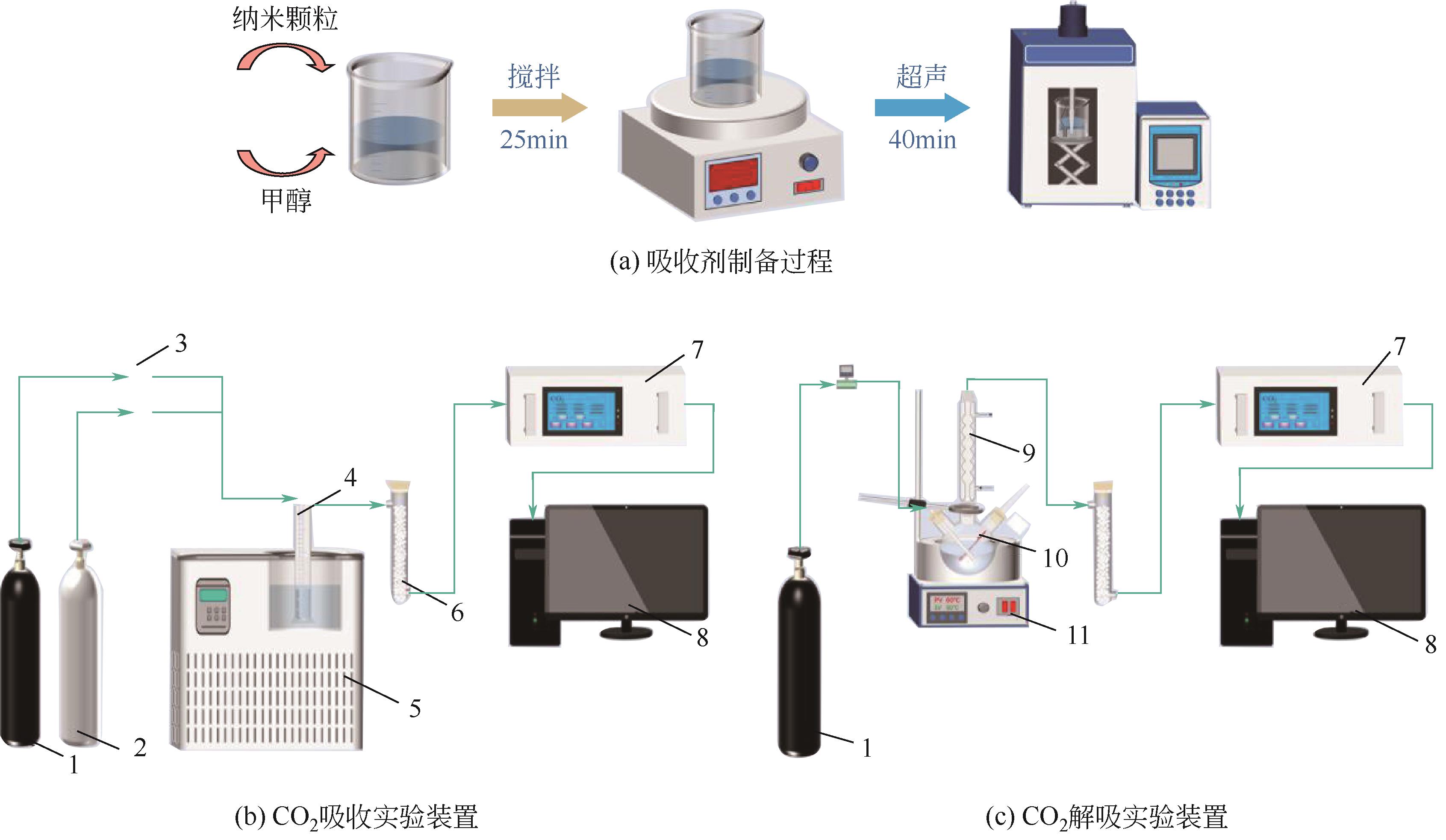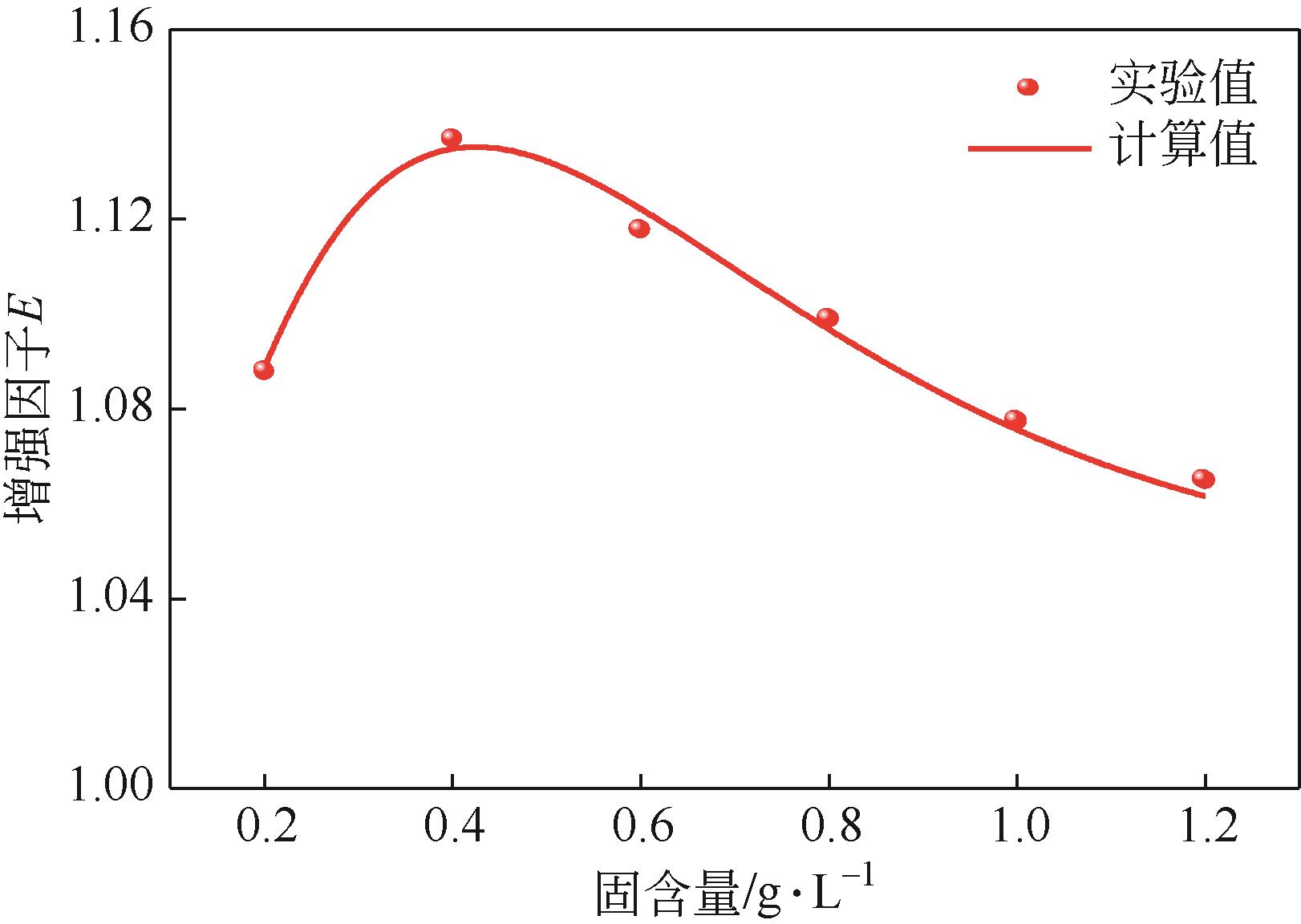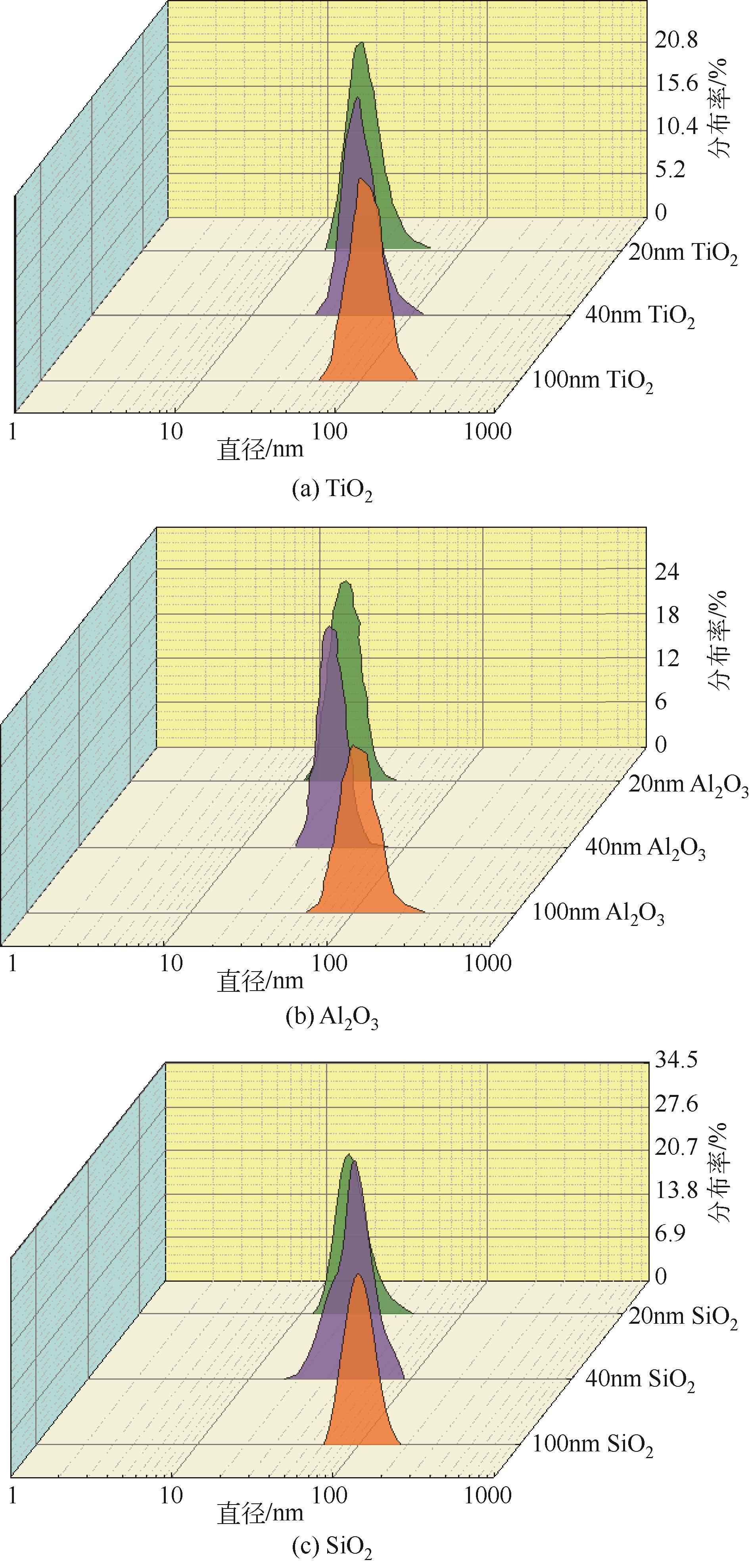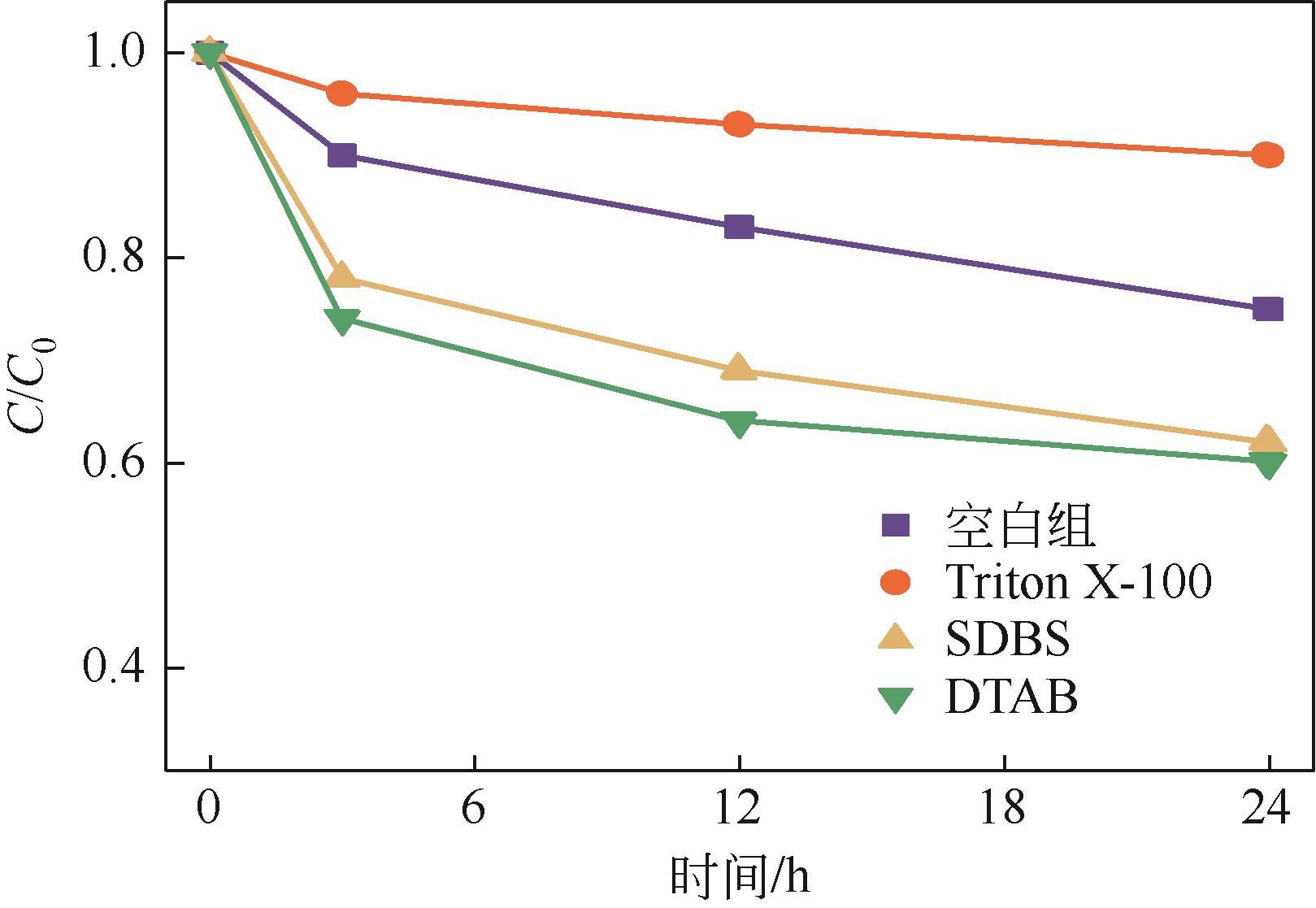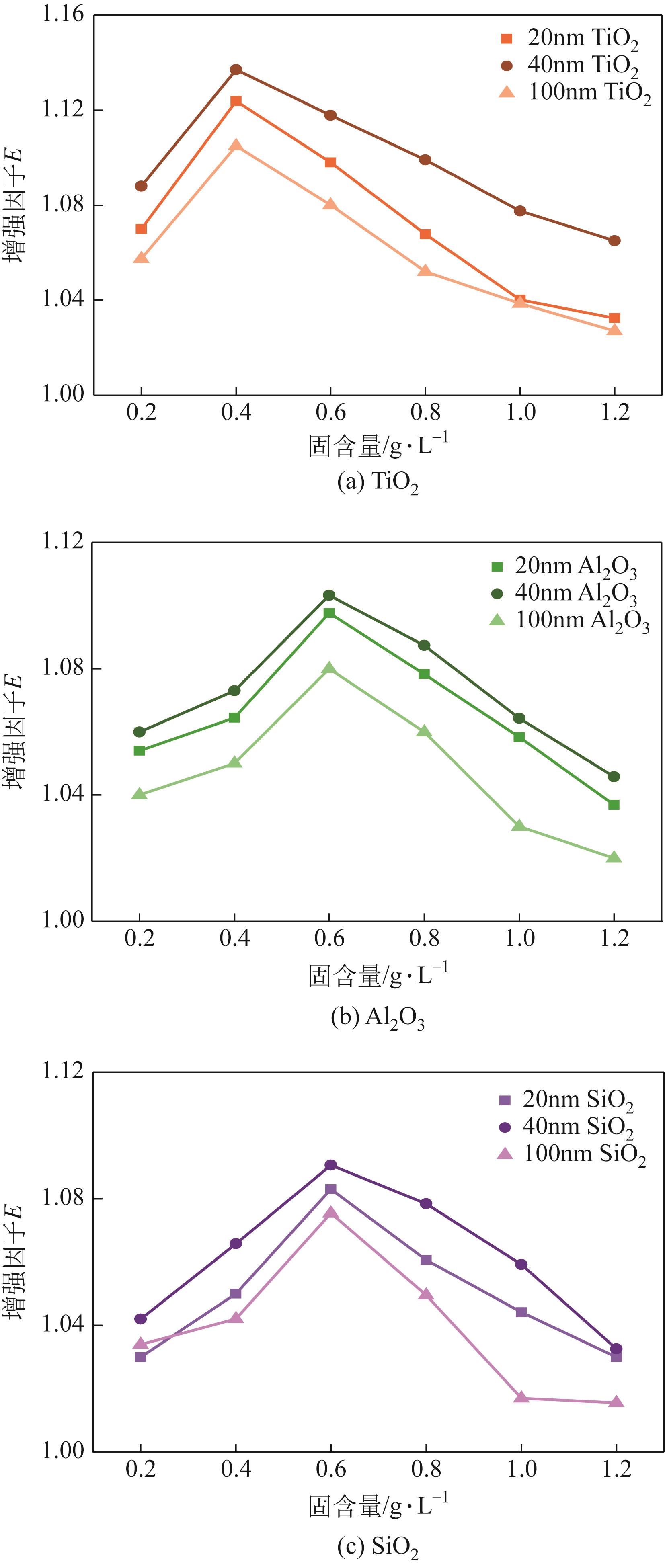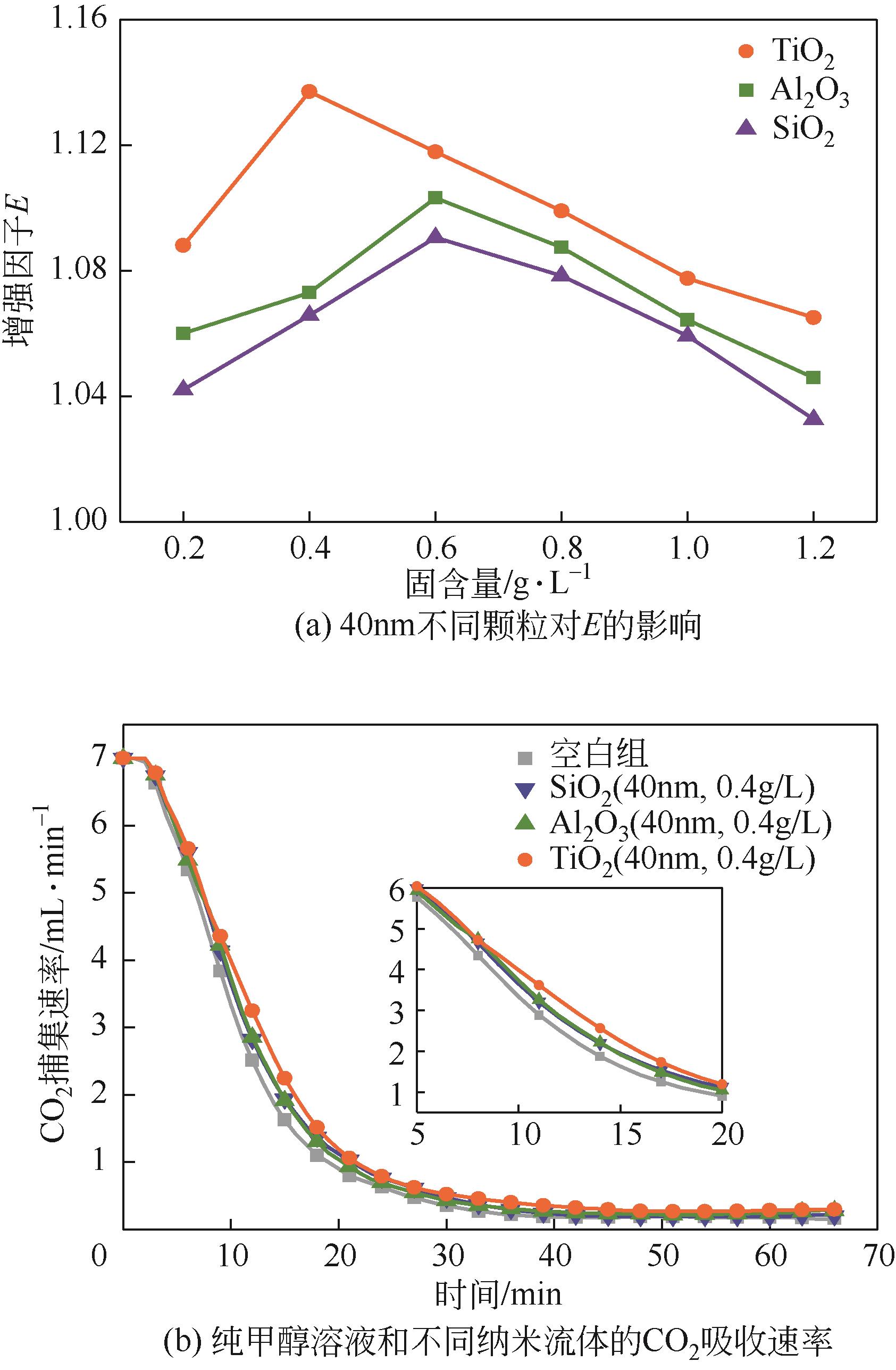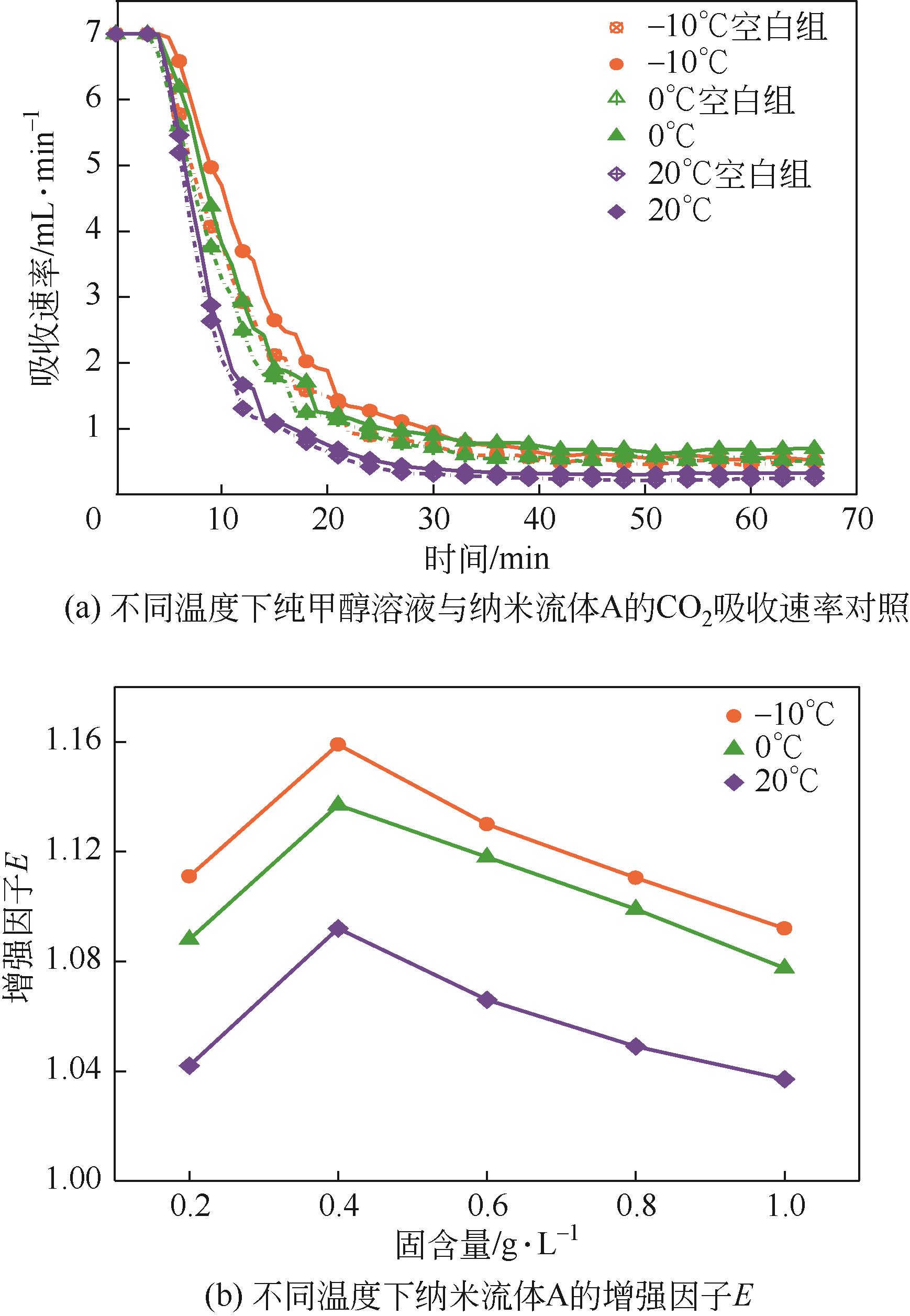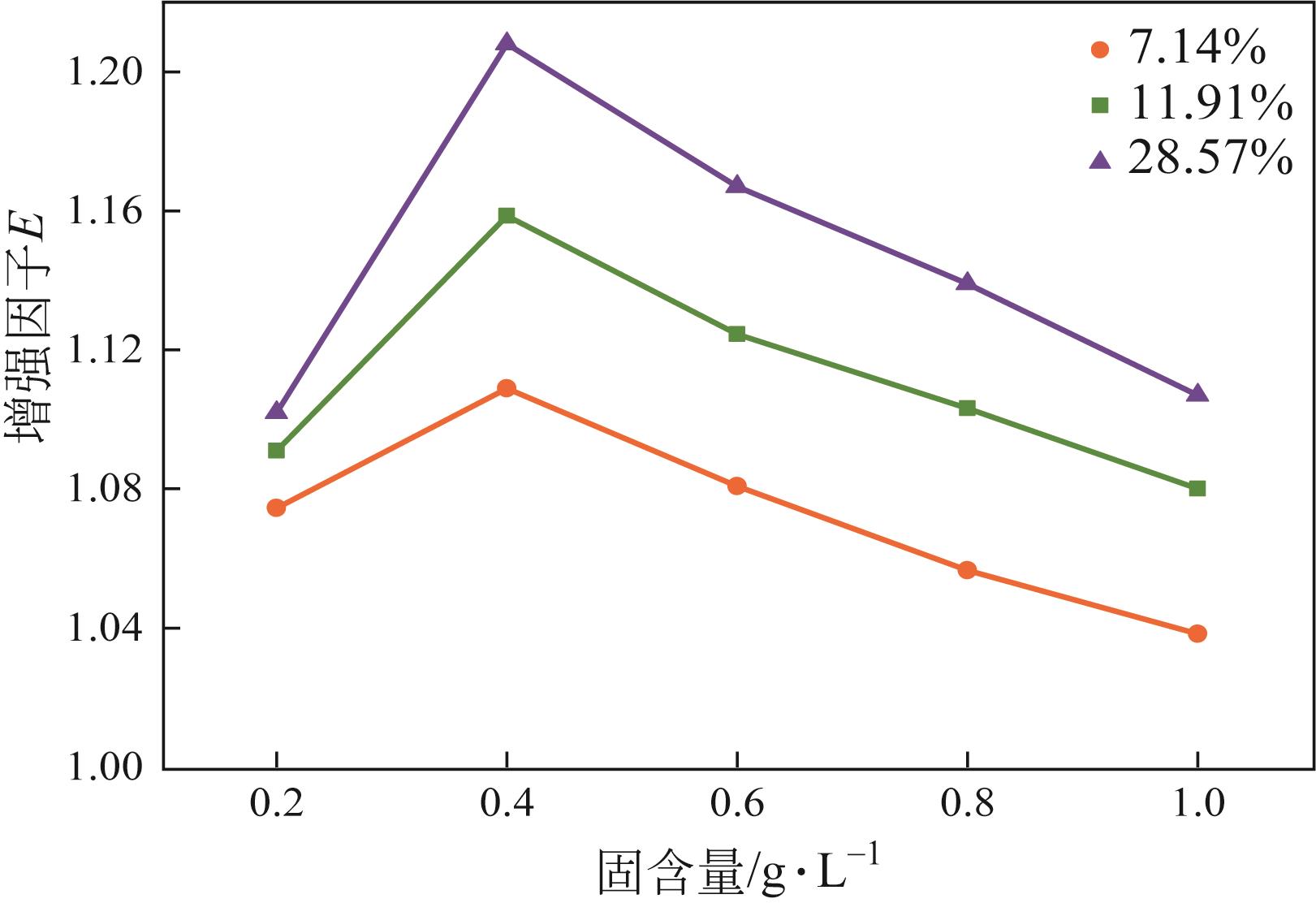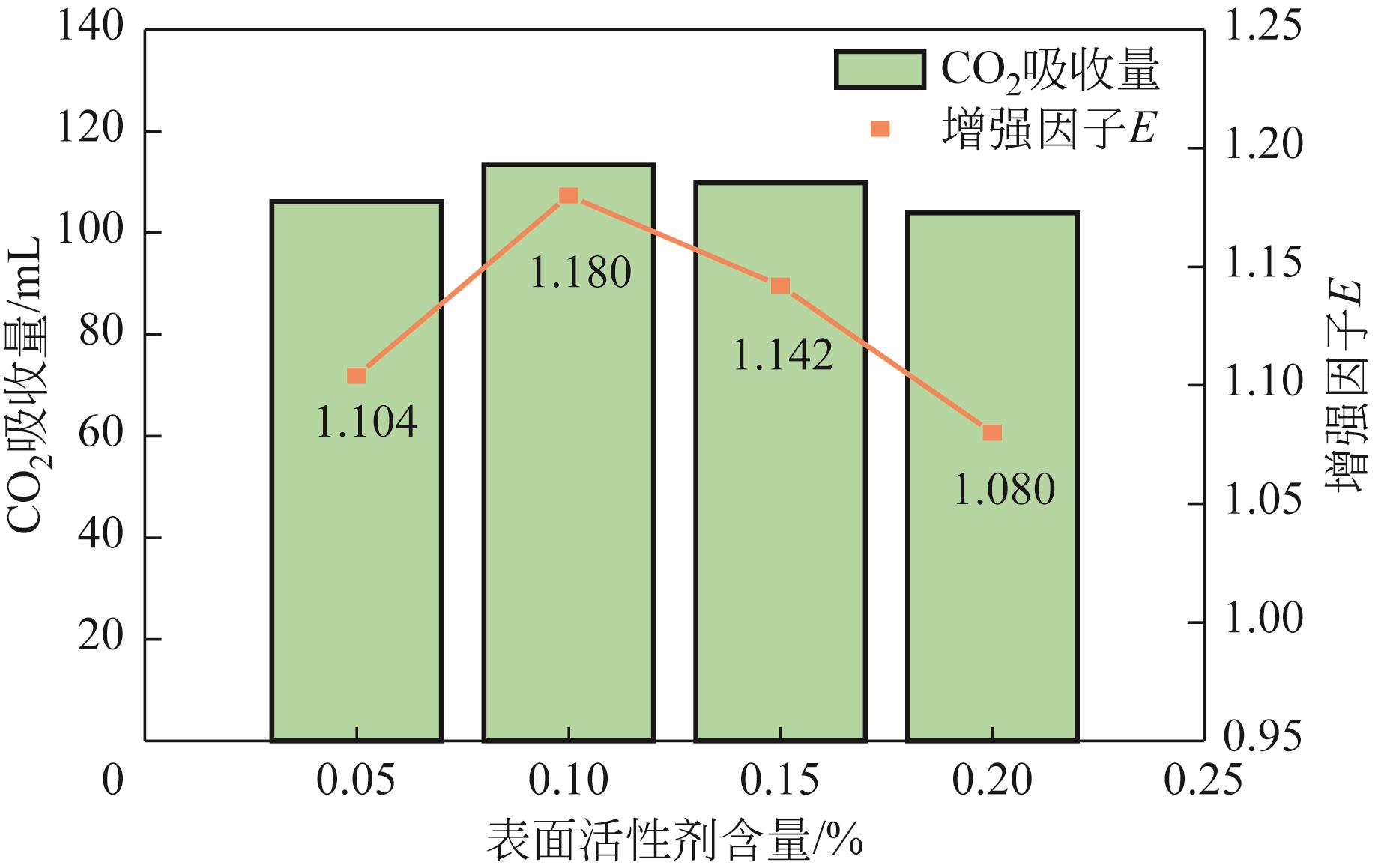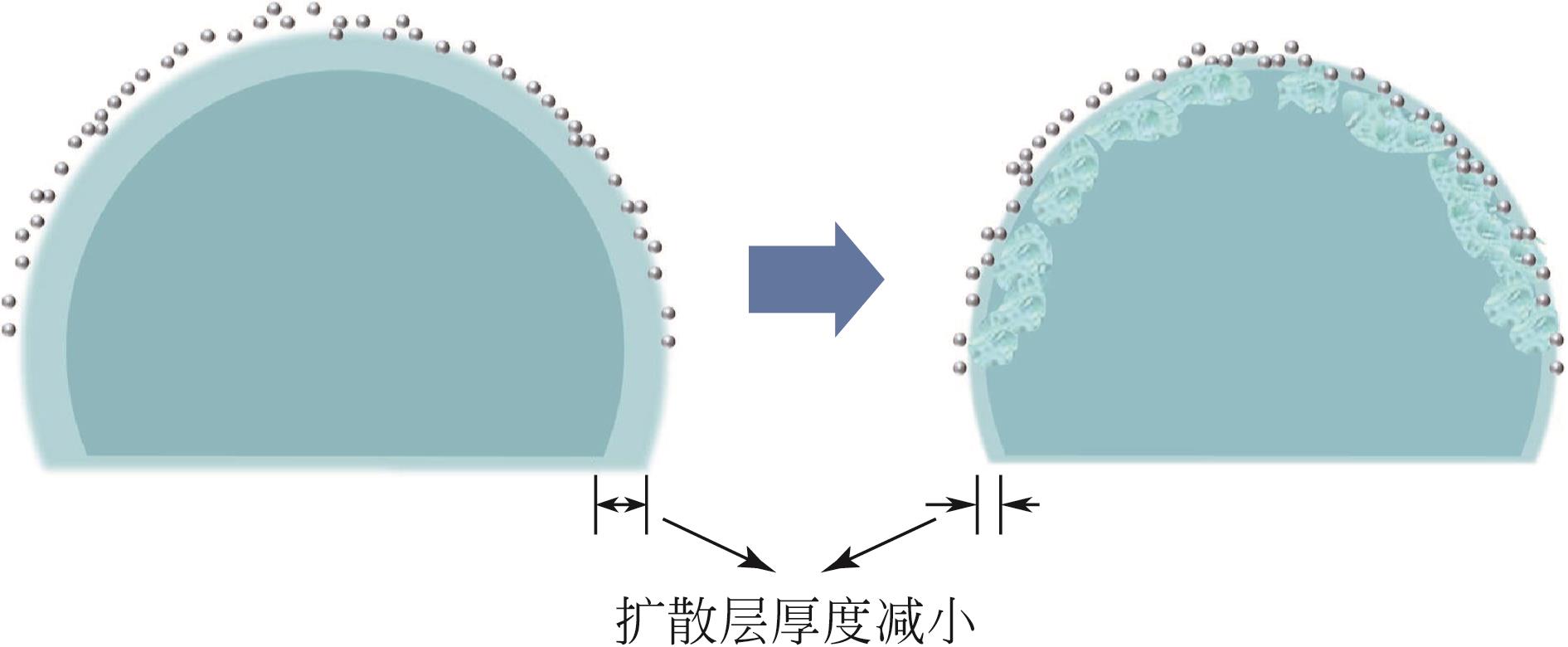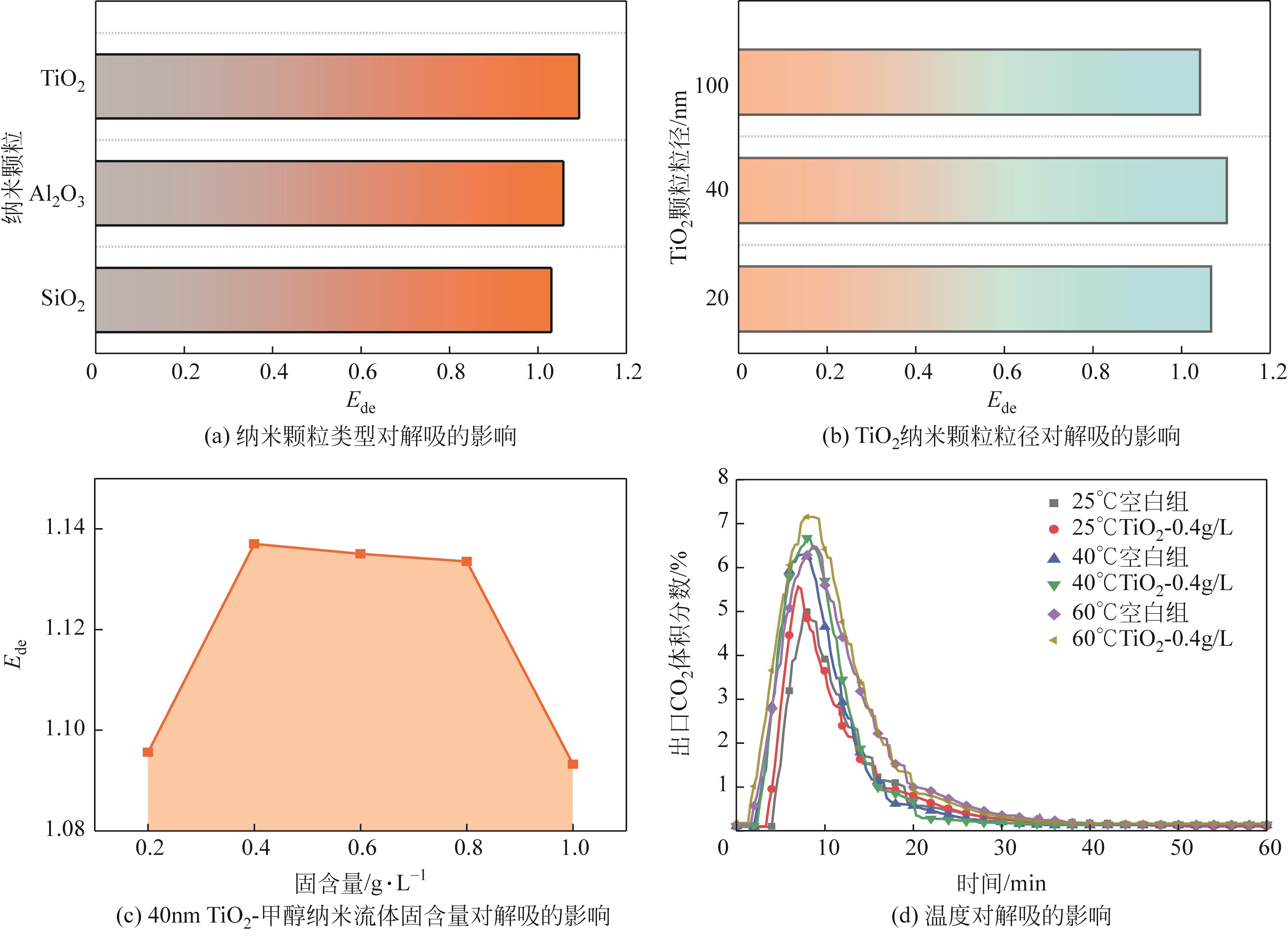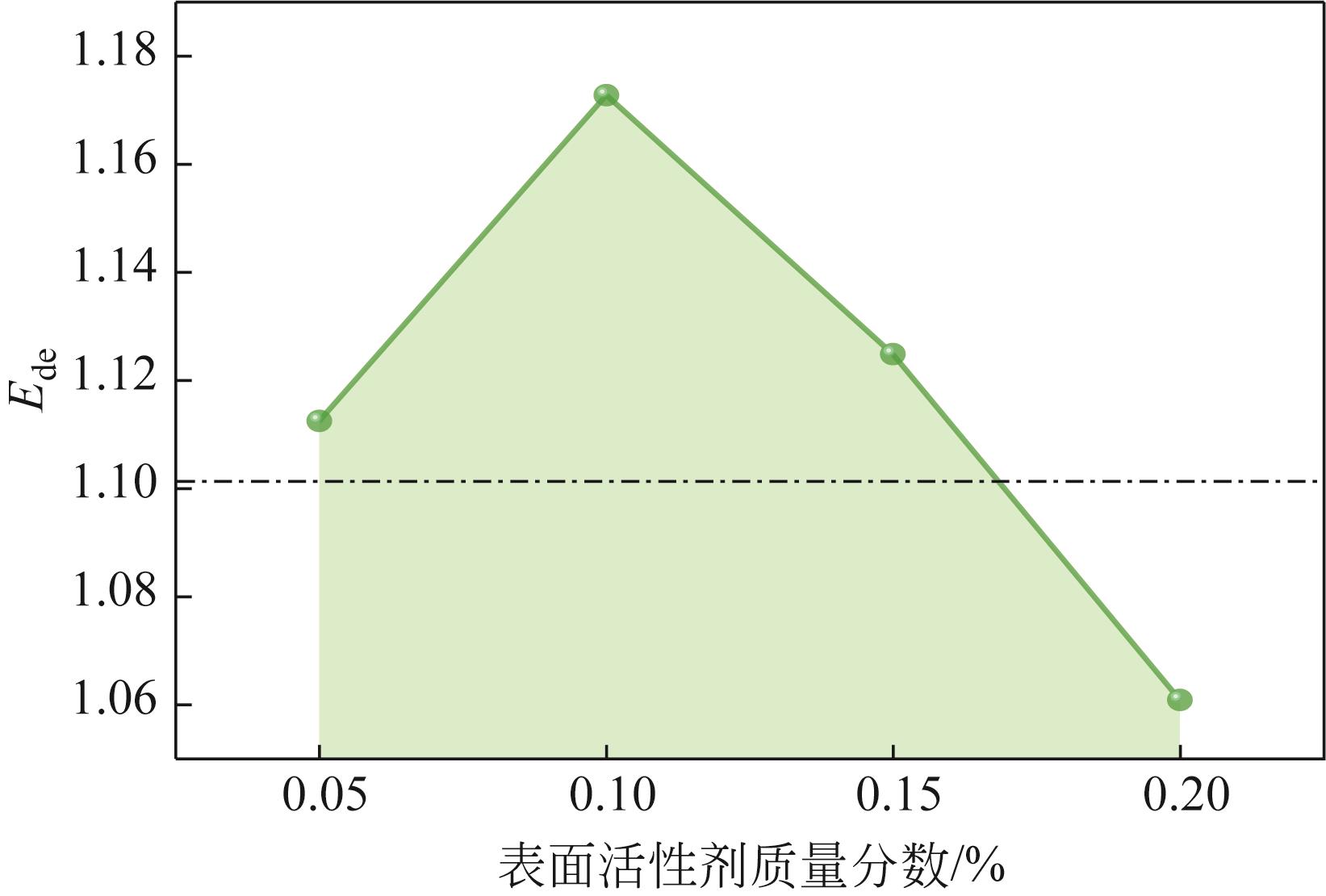化工进展 ›› 2024, Vol. 43 ›› Issue (5): 2811-2822.DOI: 10.16085/j.issn.1000-6613.2023-1851
• 二氧化碳捕集与资源化利用 • 上一篇
低冷量下强化CO2吸收的甲醇基纳米流体性能
武西宁( ), 张宁, 秦佳敏, 徐龙(
), 张宁, 秦佳敏, 徐龙( ), 魏朝阳(
), 魏朝阳( ), 马晓迅
), 马晓迅
- 西北大学化工学院,碳氢资源清洁利用国际科技合作基地,陕北能源先进化工利用技术教育部工程研究中心,陕西省洁净煤转化工程技术研究中心,陕北能源化工产业发展协同创新中心,陕西 西安 710127
-
收稿日期:2023-10-20修回日期:2023-12-14出版日期:2024-05-15发布日期:2024-06-15 -
通讯作者:徐龙,魏朝阳 -
作者简介:武西宁(2001—),女,硕士研究生,研究方向为二氧化碳捕集。E-mail:wuxining@stumail.nwu.edu.cn。 -
基金资助:国家自然科学基金(52106271);西安市科技计划(22GXFW0132);陕西省创新能力支撑计划(2024RS-CXTD-53);陕西省重点研发计划(2024GX-YBXM-428);西北大学研究生创新项目(CX2023154)
Performance of methanol-based nanofluids with enhanced CO2 absorption under low cooling demand
WU Xining( ), ZHANG Ning, QIN Jiamin, XU Long(
), ZHANG Ning, QIN Jiamin, XU Long( ), WEI Chaoyang(
), WEI Chaoyang( ), MA Xiaoxun
), MA Xiaoxun
- International Science & Technology Cooperation Base of MOST for Clean Utilization of Hydrocarbon Resources, Chemical Engineering Research Center of the Ministry of Education for Advanced Use Technology of Shanbei Energy, Shaanxi Research Center of Engineering Technology for Clean Coal Conversion, Collaborative Innovation Center for Development of Energy and Chemical Industry in Northern Shaanxi, School of Chemical Engineering, Northwest University, Xi’an 710127, Shaanxi, China
-
Received:2023-10-20Revised:2023-12-14Online:2024-05-15Published:2024-06-15 -
Contact:XU Long, WEI Chaoyang
摘要:
冷甲醇洗法捕集CO2技术要求低温环境,需要大量的冷冻能量,能耗较大。在吸收剂中引入纳米颗粒,可以有效提高气液传质速率,降低能耗。本研究旨在开发冷量需求少,吸收、解吸性能提升的甲醇基纳米流体。实验分别考察了纳米颗粒种类、固含量、尺寸,表面活性剂含量、操作温度和初始CO2浓度等因素对吸收剂捕集CO2性能的影响及机理。结果表明,在0.2~1.0g/L的TiO2、Al2O3、SiO2纳米流体中,0.4g/L的TiO2-甲醇纳米流体的CO2吸收、解吸增强效果最佳。向其中添加0.10%(质量分数)聚乙二醇辛基苯基醚(Triton X-100)后,纳米流体的吸收、解吸增强效果达到最大,且在5次循环后仍呈现良好增强效果。此外,本文对纳米流体增强吸收的机理进行了深入分析,提出了一个经验公式来预测TiO2-甲醇纳米流体的增强因子E和最佳固含量。
中图分类号:
引用本文
武西宁, 张宁, 秦佳敏, 徐龙, 魏朝阳, 马晓迅. 低冷量下强化CO2吸收的甲醇基纳米流体性能[J]. 化工进展, 2024, 43(5): 2811-2822.
WU Xining, ZHANG Ning, QIN Jiamin, XU Long, WEI Chaoyang, MA Xiaoxun. Performance of methanol-based nanofluids with enhanced CO2 absorption under low cooling demand[J]. Chemical Industry and Engineering Progress, 2024, 43(5): 2811-2822.
| 纳米流体 | a | b | c | d | e | R2 |
|---|---|---|---|---|---|---|
| 40nm TiO2-甲醇 | 2.768 | 2.374 | 143.359 | -0.051 | 0.014 | 0.993 |
表1 方程拟合结果
| 纳米流体 | a | b | c | d | e | R2 |
|---|---|---|---|---|---|---|
| 40nm TiO2-甲醇 | 2.768 | 2.374 | 143.359 | -0.051 | 0.014 | 0.993 |
| 静置时间/h | 浊度/NTU | ||
|---|---|---|---|
| TiO2 | Al2O3 | SiO2 | |
| 0 | 653.6 | 531.3 | 18.4 |
| 3 | 645.2 | 520.8 | 17.9 |
| 12 | 619.5 | 476.1 | 16.7 |
| 24 | 589.4 | 453.5 | 16.1 |
表2 纳米流体浊度
| 静置时间/h | 浊度/NTU | ||
|---|---|---|---|
| TiO2 | Al2O3 | SiO2 | |
| 0 | 653.6 | 531.3 | 18.4 |
| 3 | 645.2 | 520.8 | 17.9 |
| 12 | 619.5 | 476.1 | 16.7 |
| 24 | 589.4 | 453.5 | 16.1 |
| 1 | DIMITROV Radoslav S. The Paris agreement on climate change: Behind closed doors[J]. Global Environmental Politics, 2016, 16(3): 1-11. |
| 2 | LIU Zhu, DENG Zhu, DAVIS Steven J, et al. Monitoring global carbon emissions in 2021[J]. Nature Reviews Earth & Environment, 2022, 3(4): 217-219. |
| 3 | 吴江, 任思源, 孙一景, 等. 基于“双碳”背景的CCUS技术研究与应用[J]. 华中科技大学学报(自然科学版), 2022, 50(07): 89-100. |
| WU Jiang, REN Siyuan, SUN Yijing, et al. Research and application of CCUS technology based on “double carbon” background[J]. Journal of Huazhong University of Science and Technology (Natural Science Edition), 2022, 50(7): 89-100. | |
| 4 | FU Lipei, REN Zhangkun, SI Wenzhe, et al. Research progress on CO2 capture and utilization technology[J]. Journal of CO2 Utilization, 2022, 66: 102260. |
| 5 | 王丹. 二氧化碳捕集、利用与封存技术全链分析与集成优化研究[D]. 北京: 中国科学院大学, 2020. |
| WANG Dan. Full-chain analysis and integrated optimization of carbon dioxide capture, utilization and storage technology[D]. Beijing: University of Chinese Academy of Sciences, 2020. | |
| 6 | LEE Wonhyeok, KIM Seonggon, XU Ronghuan, et al. Combined heat and mass transfer performance enhancement by nanoemulsion absorbents during the CO2 absorption and regeneration processes[J]. International Journal of Heat and Mass Transfer, 2019, 141: 1196-1204. |
| 7 | GATTI Manuele, MARTELLI Emanuele, MARECHAL François, et al. Review, modeling, heat integration, and improved schemes of rectisol®-based processes for CO2 capture[J]. Applied Thermal Engineering, 2014, 70(2): 1123-1140. |
| 8 | CHOI S U S, EASTMAN J A. Enhancing thermal conductivity of fluids with nanoparticles[J]. Asme Fed, 1995, 231(1): 99-105. |
| 9 | KRISHNAMURTHY S, BHATTACHARYA P, PHELAN P E, et al. Enhanced mass transport in nanofluids[J]. Nano Letters, 2006, 6(3): 419-423. |
| 10 | LIANG Jiaxin, HAN Huiyu, LI Wenbo, et al. Experimental study on the absorption enhancement of CO2 by MDEA-MEA based nanofluids[J]. The Canadian Journal of Chemical Engineering, 2022, 100(11): 3335-3344. |
| 11 | LEE Jae Won, TORRES PINEDA Israel, LEE Jung Hun, et al. Combined CO2 absorption/regeneration performance enhancement by using nanoabsorbents[J]. Applied Energy, 2016, 178: 164-176. |
| 12 | PINEDA Israel Torres, KIM Dongmin, KANG Yong Tae. Mass transfer analysis for CO2 bubble absorption in methanol/Al2O3 nanoabsorbents[J]. International Journal of Heat and Mass Transfer, 2017, 114: 1295-1303. |
| 13 | 梁嘉欣. 纳米流体的制备及其强化醇胺吸收CO2的研究[D]. 西安: 西北大学, 2022. |
| LIANG Jiaxin. Preparation of nanofluids and their enhanced CO2 absorption by alcoholamines[D]. Xi’an: Northwest University, 2022. | |
| 14 | DRZAZGA M, LEMANOWICZ M, DZIDO G, et al. Preparation of metal oxide-water nanofluids by the two-step method[J]. Chemical Engineering and Equipment, 2012, 51: 213-215. |
| 15 | NAGY Endre, Tivadar FECZKÓ, KOROKNAI Balázs. Enhancement of oxygen mass transfer rate in the presence of nanosized particles[J]. Chemical Engineering Science, 2007, 62(24): 7391-7398. |
| 16 | BATCHELOR G K. The effect of Brownian motion on the bulk stress in a suspension of spherical particles[J]. Journal of Fluid Mechanics, 1977, 83(1): 97-117. |
| 17 | SEYF Hamid Reza, NIKAAEIN Behrang. Analysis of Brownian motion and particle size effects on the thermal behavior and cooling performance of microchannel heat sinks[J]. International Journal of Thermal Sciences, 2012, 58: 36-44. |
| 18 | ZHANG Yu, ZHAO Bo, JIANG Jiazong, et al. The use of TiO2 nanoparticles to enhance CO2 absorption[J]. International Journal of Greenhouse Gas Control, 2016, 50: 49-56. |
| 19 | LEE Jae Won, KIM Seonggon, TORRES PINEDA Israel, et al. Review of nanoabsorbents for capture enhancement of CO2 and its industrial applications with design criteria[J]. Renewable and Sustainable Energy Reviews, 2021, 138: 110524. |
| 20 | PEYRAVI Arman, KESHAVARZ Peyman, MOWLA Darioush. Experimental investigation on the absorption enhancement of CO2 by various nanofluids in hollow fiber membrane contactors[J]. Energy & Fuels, 2015, 29(12): 8135-8142. |
| 21 | TORRES PINEDA Israel, LEE Jae Won, JUNG Inhwa, et al. CO2 absorption enhancement by methanol-based Al2O3 and SiO2 nanofluids in a tray column absorber[J]. International Journal of Refrigeration, 2012, 35(5): 1402-1409. |
| 22 | DEHGHAN Peymaneh, AZARI Ahmad, AZIN Reza. Measurement and correlation for CO2 mass diffusivity in various metal oxide nanofluids[J]. Journal of Environmental Chemical Engineering, 2020, 8(1): 103598. |
| 23 | JIANG Jiazong, ZHAO Bo, ZHUO Yuqun, et al. Experimental study of CO2 absorption in aqueous MEA and MDEA solutions enhanced by nanoparticles[J]. International Journal of Greenhouse Gas Control, 2014, 29: 135-141. |
| 24 | YU Wei, WANG Tao, PARK Ah-Hyung Alissa, et al. Review of liquid nano-absorbents for enhanced CO2 capture[J]. Nanoscale, 2019, 11(37): 17137-17156. |
| 25 | GALHOTRA Pragati, NAVEA Juan G, LARSEN Sarah C, et al. Carbon dioxide (C16O2 and C18O2) adsorption in zeolite Y materials: Effect of cation, adsorbed water and particle size[J]. Energy & Environmental Science, 2009, 2(4): 401-409. |
| 26 | 梁嘉欣, 冉艺璇, 武西宁, 等. 纳米流体强化吸收CO2研究进展[J]. 化工新型材料, 2022, 50(9): 60-64, 69. |
| LIANG Jiaxin, RAN Yixuan, WU Xining, et al. Progress on enhancement of CO2 absorption by nanofluid[J]. New Chemical Materials, 2022, 50(9): 60-64, 69. | |
| 27 | RUCKENSTEIN E. A generalized penetration theory for unsteady convective mass transfer[J]. Chemical Engineering Science, 1968, 23(4): 363-371. |
| 28 | CHENG Shangyuan, LIU Youzhi, QI Guisheng. Progress in the enhancement of gas-liquid mass transfer by porous nanoparticle nanofluids[J]. Journal of Materials Science, 2019, 54(20): 13029-13044. |
| 29 | JUNG Jung-Yeul, LEE Jae Won, KANG Yong Tae. CO2 absorption characteristics of nanoparticle suspensions in methanol[J]. Journal of Mechanical Science and Technology, 2012, 26(8): 2285-2290. |
| 30 | KIM Jae Hyung, JUNG Chung Woo, KANG Yong Tae. Mass transfer enhancement during CO2 absorption process in methanol/Al2O3 nanofluids[J]. International Journal of Heat and Mass Transfer, 2014, 76: 484-491. |
| 31 | GHASEMI B, AMINOSSADATI S M. Brownian motion of nanoparticles in a triangular enclosure with natural convection[J]. International Journal of Thermal Sciences, 2010, 49(6): 931-940. |
| 32 | 唐忠利, 湛波, 张树杨, 等. CO2在纳米流体解吸过程中的微对流现象[J]. 化工学报, 2012, 63(6): 1691-1696. |
| TANG Zhongli, ZHAN Bo, ZHANG Shuyang, et al. Microconvection phenomena accompanying CO2 desorption from nanofluids[J]. CIESC Journal, 2012, 63(6): 1691-1696. | |
| 33 | KIM Eung Surk, JUNG Jung-Yeul, KANG Yong Tae. The effect of surface area on pool boiling heat transfer coefficient and CHF of Al2O3/water nanofluids[J]. Journal of Mechanical Science and Technology, 2013, 27(10): 3177-3182. |
| 34 | DARVANJOOGHI Mohammad Hossein Karimi, ESFAHANY Mohsen Nasr, ESMAEILI-FARAJ Seyyed Hamid. Investigation of the effects of nanoparticle size on CO2 absorption by silica-water nanofluid[J]. Separation and Purification Technology, 2018, 195: 208-215. |
| 35 | 张帅. Cu-Al2O3纳米流体吸收解吸船舶尾气中的CO2的实验研究[D]. 重庆: 重庆交通大学, 2022. |
| ZHANG Shuai. Experimental study on the absorption and desorption of CO2 in the exhaust gas of ships by Cu-Al2O3 nanofluids[D]. Chongqing: Chongqing Jiaotong University, 2022. | |
| 36 | 于伟. 纳米颗粒强化的二氧化碳吸收剂及新型再生工艺研究[D]. 杭州: 浙江大学, 2019. |
| YU Wei. Post-combustion CO2 capture using liquid nano-absorbents and novel solvent regeneration process[D]. Hangzhou: Zhejiang University, 2019. | |
| 37 | IQBAL Anum, MAHMOUD Mohamed S, SAYED Enas Taha, et al. Evaluation of the nanofluid-assisted desalination through solar stills in the last decade[J]. Journal of Environmental Management, 2021, 277: 111415. |
| 38 | 贾萌川, 张忠孝, 江砚池, 等. 纳米颗粒强化TETA溶液富液解吸CO2的实验研究[J]. 化学工程, 2019, 47(10): 37-41, 78. |
| JIA Mengchuan, ZHANG Zhongxiao, JIANG Yanchi, et al. Desorption of CO2 performance enhancement by nanoparticles in TETA rich solution[J]. Chemical Engineering (China), 2019, 47(10): 37-41, 78. | |
| 39 | CHOI Ik Dong, LEE Jae Won, KANG Yong Tae. CO2 capture/separation control by SiO2 nanoparticles and surfactants[J]. Separation Science and Technology, 2015, 50(5): 772-780. |
| [1] | 高凡翔, 刘阳, 张贵泉, 秦锋, 姚建涛, 金辉, 师进文. 燃煤烟气湿法协同脱硫脱碳技术研究进展[J]. 化工进展, 2024, 43(5): 2324-2342. |
| [2] | 苗诒贺, 王耀祖, 刘雨杭, 朱炫灿, 李佳, 于立军. 添加剂改性固态胺吸附剂用于碳捕集的研究进展[J]. 化工进展, 2024, 43(5): 2739-2759. |
| [3] | 李凯, 魏鹤琳, 左夏华, 杨卫民, 阎华, 安瑛. 水基炭黑-胶原蛋白纳米流体制备及稳定性实验[J]. 化工进展, 2024, 43(4): 1944-1952. |
| [4] | 孙伟吉, 刘浪, 方治余, 朱梦博, 解耿, 何伟, 高宇恒. 改性镁渣的湿法碳酸化工艺[J]. 化工进展, 2024, 43(4): 2161-2173. |
| [5] | 徐泽文, 王明, 王强, 侯影飞. 胺基材料在二氧化碳分离膜领域研究进展[J]. 化工进展, 2024, 43(3): 1374-1386. |
| [6] | 周逸寰, 解强, 周红阳, 梁鼎成, 刘金昌. 基于分子模拟的多孔炭材料结构模型构建方法研究进展[J]. 化工进展, 2024, 43(3): 1535-1551. |
| [7] | 董晓涵, 田月, 苏毅. 含钛高炉渣制备复合吸附剂及其铬吸附性能[J]. 化工进展, 2024, 43(3): 1552-1564. |
| [8] | 闫子涵, 王栋栋, 阴慧敏, 刘文瑞, 卢春喜. 射流与气固两相流混合过程的测试与分析方法[J]. 化工进展, 2024, 43(2): 713-721. |
| [9] | 苏茜, 邓翔天, 刘振兴. 油气水三相流相含率超声测试模型优化[J]. 化工进展, 2024, 43(2): 791-799. |
| [10] | 张瑞凯, 张会书, 郑龙云, 曾爱武. CO2吸收过程中气相分压对Rayleigh对流传质特性的影响[J]. 化工进展, 2024, 43(2): 913-924. |
| [11] | 谢广烁, 张斯亮, 何松, 肖娟, 王斯民. 基于最佳预后元模型的颗粒污垢特性全局敏感性分析[J]. 化工进展, 2024, 43(1): 328-337. |
| [12] | 戴欢涛, 曹苓玉, 游新秀, 徐浩亮, 汪涛, 项玮, 张学杨. 木质素浸渍柚子皮生物炭吸附CO2特性[J]. 化工进展, 2023, 42(S1): 356-363. |
| [13] | 徐晨阳, 都健, 张磊. 基于图神经网络的化学反应优劣评价[J]. 化工进展, 2023, 42(S1): 205-212. |
| [14] | 王胜岩, 邓帅, 赵睿恺. 变电吸附二氧化碳捕集技术研究进展[J]. 化工进展, 2023, 42(S1): 233-245. |
| [15] | 陈林, 徐培渊, 张晓慧, 陈杰, 徐振军, 陈嘉祥, 密晓光, 冯永昌, 梅德清. 液化天然气绕管式换热器壳侧混合工质流动及传热特性[J]. 化工进展, 2023, 42(9): 4496-4503. |
| 阅读次数 | ||||||
|
全文 |
|
|||||
|
摘要 |
|
|||||
